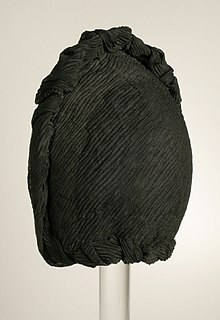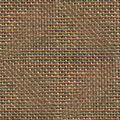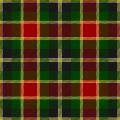Crêpe (textile)

Woman's mourning bonnet in hard crape, c. 1880
Crêpe, also spelled crepe or crape (from the French crêpe)[1] is a silk, wool, or synthetic fiber fabric with a distinctively crisp and crimped appearance. The term "crape" typically refers to a form of the fabric associated specifically with mourning.[2] Crêpe was also historically called "crespe" or "crisp".[3]
Types[]
A[]
This section needs additional citations for verification. (August 2021) |

Detail of an aerophane dress, c. 1827
- Aerophane
- 1. A crimped silk gauze with a crêpe texture
- 2. A historic 19th century lightweight crêpe,[4]: 6 introduced in 1820,[5] and, as "crepe aerophane" in 1861.[6]
- Albert crêpe
- 1. A fine black silk mourning crêpe introduced in 1862.[5]
- 2. Plain-weave crêpe.
- 3. An -made silk and cotton blend crêpe.[4]: 10
- Alicienne
- A furnishing fabric with alternating plain weave and crêpe stripes.[4]: 14
- Alpaca crêpe
- Rayon and acetate blend crêpe with a woollen texture, not necessarily made of alpaca yarn.[4]: 14
- Altesse
- A British plain-weave silk fabric with crêpe filling.[4]: 14
- Arabian
- 1. A British-made plain-weave cloth with figured crêpe designs
- 2. Piece-dyed silk crêpe embroidered with dots.[4]: 23
- Armure
- (See Georgian crêpe)
B[]
- Balanced crêpe
- Crêpe woven with alternating S and Z twist yarns in both directions.[4]: 39
- Balmoral crape
- An 1895 English crape.[7]
- Balzerine
- An 1889 narrow-striped silk grenadine overlaid with wider crêpe stripes. An earlier 1830s cotton/worsted fabric, spelled balzarine, was probably not crêpe.[7]
- Bark (or tree-bark) crêpe
- A broad term describing rough crêpes with a bark texture.[8][9]
- Bauté satin
- Warp-woven satin with a plain crêpe reverse.[10]
- Borada crape
- A cheaper, economical version of mourning crape advertised in 1887.[3]
- Bologna crêpe
- Silk crêpe used for mourning, also known as valle cypre.[11]
C[]
- Canton crêpe
- A soft silk crêpe with a pebbly surface originally associated with Canton in China, with bias ribs. Made in Britain, but exported to China, hence its name.[12]
- Caustic soda crêpe
- Cotton treated with chemicals to create a crêpe-like texture, often in patterns.[13]
- Chiffon crêpe
- Chiffon-weight crêpe.[14]
- Chijimi
- Japanese crêpe.[14]
- Chirimen
- Japanese raw silk crêpe widely used to make kimono.[15][16] When woven with a dot it is mon-chirimen.[17][18]
- Courtauld crape
- 1890s mourning crape made by Courtaulds. An 1894 variation, called 'Courtauld's new silk crêpe', was exceptionally thin and soft.[6] Courtaulds monopolised the export market for English crapes and crêpes, meaning that the textiles known as "crape anglaise" were almost always manufactured by Courtaulds up until 1940.[3]
- Crêpe Algerian
- A trade name for a printed pongee with a rough crêpe texture.[19]
- Crêpe anglaise
- A French term for English mourning crapes in black and white.[6] The only true 'crape anglais' was considered that made by Courtaulds (see Courtauld crape) which was last made in 1940.[3]
- Crêpe Beatrice
- Trade name for crêpe with a light warp stripe.[19]
- Crêpe berber
- Trade name for a piece-dyed crepe-textured pongee.[20]
- Crêpe charmeuse
- Lightweight silk satin with a grenadine warp and crêpe reverse.[20]
- Crêpe chenette
- A tradename for a strong crêpe with a pebble texture.[20]
- Crêpe crêpe
- Made with extra twists in the warp to create an extra-deep texture.[20]
- Crêpe de chine
- A fine, lightweight silk, cotton, or worsted, with a plain weave and crêpe-twist filling.[20]
- Crêpe de chine travers
- A ribbed crêpe de chine with heavier filling yarns introduced to the weave at regular intervals.[20]
- Crêpe de dante
- Crêpe with silk and wool filling.[20]
- Crêpe de lahor
- Cotton crêpe made in France.[20]
- Crêpe de laine
- A sheer wool fabric plain-woven with hard twist for a slight crêpe effect.[20]
- Crêpe de santé
- An undyed, closely woven, rough-textured wool-blend crêpe mixed with silk, linen or cotton, also called "health crepe".[20]
- Crêpe de Suisse
- 1860 dress fabric.[6]
- Crêpe d'espagne
- Open-weave fabric with a silk warp and wool filling.[20]
- Crêpe diana
- Trade name for a cotton and silk blend crêpe.[20]
- Crêpe Elizabeth
- English term for a mottled or pebbled georgette.[20]
- Crêpe faille sublime
- Silk grosgrain with a hard-twist filling.[20]
- Crêpe flannel
- Plain-woven worsted with a crêpe finish.[20]
- Crêpe imperial
- Late 19th century woollen crape.[6]
- Crêpe jacquard
- Crepe with designs produced by jacquard weaving.[20]
- Crêpe janigor
- Trade name for a heavy rib textile with alternating rayon and dull acetate warp threads, cross-dyed for varied shades.[20]
- Crêpe jersey
- Vertically ribbed silk crêpe resembling the knit fabric.[20]
- Crêpe lissé (or lease)
- A lightweight, lustrous, slightly stiffened open-weave silk or cotton crêpe, with fewer twists than a crêpe crêpe.[20]
- Crêpela
- French term for a crêpe effect.[20]
- Crepeline
- Very sheer plain-woven silk usually used in textile conservation.[20] Originally introduced in the 1870s as a cheap alternative to crepe de chine.[6]
- Crêpella
- Plain-woven worsted using hard-spun yarn.[20]
- Crêpe maretz
- An 1862 fabric.[6]
- Crêpe marocain
- Heavy, cross-ribbed crêpe where the filling yarn is coarser than the warp, resembling a canton crêpe.[20]
- Crêpe meteor
- Soft silk crêpe, twill weave reversing to satin.[20]
- Crêpe mohair
- Silk and mohair blend crêpe.[20]
- Crêpe morette
- Trade name. Lightweight worsted crêpe with heavier, looser filling.[20]
- Crêpe mosseux
- A type of opaque voile which resists shrinkage.[20]
- Crêpe myosotis
- A later mourning crêpe made in the 1930s, in crimped silk with a soft finish.[6] Courtaulds launched this textile in the early 1930s as an alternative to the increasingly unpopular traditional stiff mourning crapes.[3]
- Crepenette
- Crêpe-effect pongee.[20]
- Crêpe ondese
- Rough textured rayon-acetate blend crêpe.[20]
- Crêpe poplin
- A late 19th century silk-wool rib fabric with crêpe effect.[20]
- Crêpe rachel
- French print cotton-worsted blend crêpe.[20]
- Crêpe radio
- British raw silk crêpe with a ribbed effect, using alternate double rows of S-twist and Z-twist.[20]
- Crêpe royal
- Sheer crêpe-de-chine introduced in 1889.[6]
- Crêpe suzette
- A variation on crepon georgette.[20]
- Crepine
- Silk with crêpe dots. The name also describes a type of fringe.[20]
- Crepoline
- A class of transparent fabrics with a warp-wise crêpe effect.[20]
- Crepon
- A heavier crêpe with an exaggerated warp-directional texture produced by several weaving techniques.[20] A soft silky version was introduced in 1866, and the second, much heavier version in 1882. In the 1890s crepon also described a woollen fabric that puffed between stripes or squares, including crepon milleraye (striped) and crepon Persian (with 'Oriental patterns').[6]
- Crystal crêpe
- An English term for silk crêpe.[21]
- Crespe
- Lightweight crimped mourning gauze, late 16th century.[6]
- Cynara
- An crêpe-type fabric in rayon and acetate.[22]
- Cyprus
- Fine crêpe used for mourning hatbands in the 15th-17th centuries, made in Cyprus.[23]

Chirimen

Crepe de chine
E[]
- ʻeleʻele kanikau
- Black mourning crêpe worn in Hawaii.[24]
- Epingline
- Textile in silk, rayon or worsted with a crêpe surface.[25]
- Esmeralda or étendelle
- Sheer white crêpe or gauze popular in the early 19th century, often embroidered.[26]
F[]
- Flat crêpe
- Also called mock crepe or (inaccurately) French crepe. A smooth, flat plain-weave fabric, typically a silk blend, with hard-twisted yarns and ordinary yarn warp. Also used to describe a similar fabric made without crepe-twist yarns.[27]
- French crêpe
- 1. An inaccurately-applied name for flat crêpe.
- 2. Plain-weave light silk or rayon cloths similar to flat crêpe.
- 3. A lingerie weight fabric with ordinary yarn warp and a twisted filling yarn that is less twisted than typical crepe twist.[28]
G[]
- Gamsa
- An imitation satin-backed crêpe in twill weave rayon.[29]
- Georgette
- 1. Sheer, lightweight fabric named after the couturiere Georgette de la Plante.[30]
- 2. A crepe-surfaced plain weave silk or synthetic fabric with alternating S and Z twist yarns in both warp and weft.
- 3. An English term for cotton crepe.[31]
- Georgian crêpe
- A chain-pebbled crêpe (called armure in France) often with diamond, shield or bird's-eye motifs.[31]

Georgette evening dress, 1930s
H[]
- Health crêpe
- See crêpe de santé.
L[]
- Lingerie crêpe
- See French crêpe.
M[]
- Marana
- Woollen crepe, very resilient and drapable.[32]
- Mock crêpe
- See flat crêpe
- Momie crêpe
- Light cotton fabric.[17]
- Moss crepe
- See sand crepe.
N[]
- Norwich crêpe or crape
- 1. 19th century silk warp and worsted, resembling a non-twill bombazine but not considered true crêpe.
- 2. 17th century black-dyed worsted crêpe made in England.
- 3. A georgette-like silk and cotton blend fabric in a crêpe weave.[3][33]
P[]
- Pekin crêpe
- Pekin (shiny and matte striped textile) woven with a crêpe weft.[34]
- Plissé
- Mainly cotton fabric with a crêpe effect created by chemically treating the fabric to pucker and crinkle, typically in stripes. Plissé satin is made using crêpe yarns.[35]
R[]
- Reverse crêpe
- Woven with a crêpe yarn warp and flat filling.[36]
- Rhythm crêpe
- Plain-weave rayon with seersucker stripe.[37]
- Romaine
- Heavy but transparent crêpe.[38]
- Roshanara
- Trade name for heavily ribbed satin-backed crepe.[39]
- Russian crêpe
- Invented in 1881. A coarse-weave crêpe.[40]
S[]
- Sand crepe or moss crepe
- Crêpe with a grained or frosted surface appearance, created with a small dobby weave.[41]
- Sawdust crêpe
- Similar to sand crêpe but with a harsher surface.[42]
- Satin-back crêpe
- Reversible fabric with a satin face and a crêpe reverse.[19]
- Shioze
- Japanese spun-silk crêpe.[43]
- Spanish crêpe
- See Crepe d'espagne.
V[]
Y[]
- Yantsou
- Figured silk crêpe made in Yantai, Eastern China.[45]
- Yeddo crêpe
- Soft cotton fabric, medium weight.[46]
See also[]
- Crêpe paper, paper with similar texture
- Momie cloth
References[]
- ^ Online Etymology Dictionary
- ^ Dictionary.com
- ^ a b c d e f Taylor, pp. 246-253
- ^ a b c d e f g Tortora, Phyllis G.; Johnson, Ingrid (2013). The Fairchild Books Dictionary of Textiles (8th ed.). London: Bloomsbury Academic. ISBN 9781609015350.
- ^ a b Lewandowski, p.6
- ^ a b c d e f g h i j k Lewandowski, p.77
- ^ a b Lewandowski, p. 22
- ^ Lewandowski, p. 25
- ^ Tortora & Johnson, p.45
- ^ Tortora & Johnson, p. 52
- ^ Tortora & Johnson, p. 66
- ^ Tortora & Johnson, p. 96
- ^ Tortora & Johnson, p. 52
- ^ a b Lewandowski, p. 52
- ^ Ikegami, p.276
- ^ Panda, p.92
- ^ a b Lewandowski, p. 194
- ^ "About Kyotango".
- ^ a b c Tortora & Johnson, p. 156
- ^ a b c d e f g h i j k l m n o p q r s t u v w x y z aa ab ac ad ae af ag ah ai aj Tortora & Johnson, p. 157
- ^ Tortora & Johnson, p. 164
- ^ Tortora & Johnson, p. 168
- ^ Lewandowski, p. 81
- ^ Lewandowski, p. 96
- ^ Lewandowski, p. 99
- ^ Tortora & Johnson, p. 215
- ^ Tortora & Johnson, p. 236
- ^ Tortora & Johnson, p. 247
- ^ Tortora & Johnson, p. 254
- ^ Picken, Mary Brooks (1957). A Dictionary of Costume and Fashion: Historic and Modern. Courier Corporation. pp. 88. ISBN 9780486402949.
- ^ a b Tortora & Johnson, p. 259
- ^ Tortora & Johnson, p. 372
- ^ Tortora & Johnson, p. 418
- ^ Lewandowski, p. 224
- ^ Tortora & Johnson, p. 465
- ^ Tortora & Johnson, p. 509
- ^ Tortora & Johnson, p. 510
- ^ Lewandowski, p. 252
- ^ Tortora & Johnson, p. 517
- ^ Lewandowski, p. 254
- ^ Tortora & Johnson, p. 527
- ^ Tortora & Johnson, p. 536
- ^ Tortora & Johnson, p. 555
- ^ Tortora & Johnson, p. 664
- ^ Tortora & Johnson, p. 693
- ^ Tortora & Johnson, p. 695
Bibliography[]
- Ikegami, Eiko (2005). Bonds of civility : aesthetic networks and political origins of Japanese culture (Reprinted ed.). Cambridge: Cambridge University Press. ISBN 9780521601153.
- Lewandowski, Elizabeth J. (2011). The complete costume dictionary. Lanham, Md.: Scarecrow Press, Inc. ISBN 9780810877856.
- Panda, H. (2010). The complete book on textile processing and silk reeling technology (First ed.). Delhi: Asia Pacific Business Press, Inc. ISBN 9788178331355.
- Taylor, Lou (2009) [1983]. "Appendix 1: A Selection of Popular Mourning Fabrics". Mourning Dress: A Costume and Social History (2009 ed.). Routledge Revivals. pp. 246–253. ISBN 978-1135228439.
- Tortora, Phyllis G.; Johnson, Ingrid (2014). The Fairchild books dictionary of textiles (8th ed.). New York: Fairchild Books. ISBN 9781609015350.
Categories:
- Woven fabrics
- Silk
- Death customs


